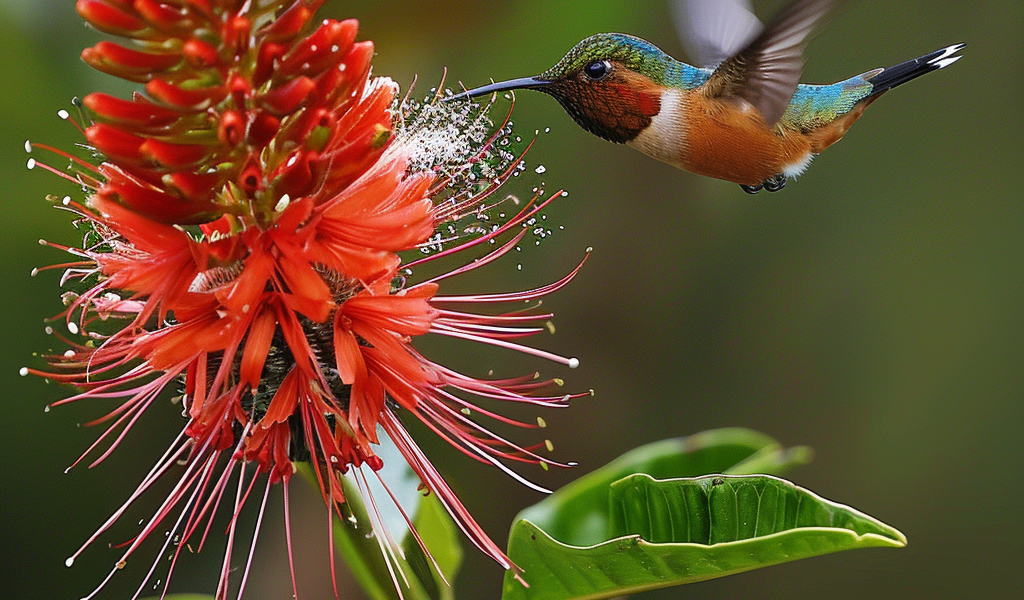Recent research has unveiled a fascinating aspect of plant behavior, revealing that flowers may engage in a competitive struggle for pollinator attention. This groundbreaking study, conducted by scientists from South Africa and Brazil, highlights the intriguing concept of explosive pollen placement and its role in plant reproduction.
Published in The American Naturalist, the study demonstrates how pollen grains from rival plants compete for space on pollinators, ultimately influencing which pollen reaches the next flower. This process bears a striking resemblance to sperm competition observed in the animal kingdom, where some species have evolved mechanisms to remove rival sperm before depositing their own.
Unlike animals, where reproductive contact occurs directly, plants must rely on pollinators to facilitate the transfer of pollen. This makes the manipulation of pollen crucial, as it must occur before it reaches another flower. The research focused on Hypenea macrantha, a vivid red flower endemic to Brazil, which employs a unique catapult-like mechanism to ensure its pollen is prioritized.
The researchers conducted a series of experiments, utilizing slow-motion video footage to capture the explosive action of the flower. They observed how Hypenea macrantha effectively ejects its pollen onto the bill of a hummingbird, simultaneously dislodging any pollen from competing flowers. This remarkable mechanism, termed explosive pollen placement, showcases the plant’s ability to manipulate pollination in its favor.
To quantify the effectiveness of this mechanism, the scientists marked pollen grains with quantum dots and placed them on the hummingbird’s bill. After the flower’s explosive release, they counted the marked grains to determine how many were removed. This innovative approach provided empirical evidence supporting the notion of competitive pollen removal among plants.
Professor Bruce Anderson, an evolutionary ecologist at Stellenbosch University and the study’s lead author, emphasized the significance of these findings. He noted that the research supports the idea that plants have evolved strategies to enhance their reproductive success by manipulating the pollen transfer process.
The concept of explosive pollen placement is not entirely new; however, this study marks the first instance of researchers providing concrete evidence of its effectiveness. The ability of Hypenea macrantha to outcompete rival pollen illustrates the complex interactions between plants and their pollinators.
This research opens new avenues for understanding plant evolution and reproductive strategies. By exploring how plants compete for pollinator attention, scientists can gain insights into the intricate relationships that shape ecosystems. The findings also have implications for conservation efforts, as understanding these dynamics can help preserve the delicate balance between plant species and their pollinators.
As the study sheds light on the competitive nature of plants, it raises intriguing questions about the broader implications for biodiversity and ecosystem health. The intricate dance of pollen transfer, influenced by evolutionary adaptations, underscores the importance of protecting both plant and pollinator species to maintain ecological integrity.
In conclusion, the research conducted by Stellenbosch University and Brazilian scientists not only enriches our understanding of plant behavior but also highlights the incredible strategies evolved by nature to ensure reproductive success. The explosive mechanisms employed by flowers like Hypenea macrantha reveal a fascinating layer of complexity in the natural world, inviting further exploration into the dynamics of plant-pollinator interactions.





